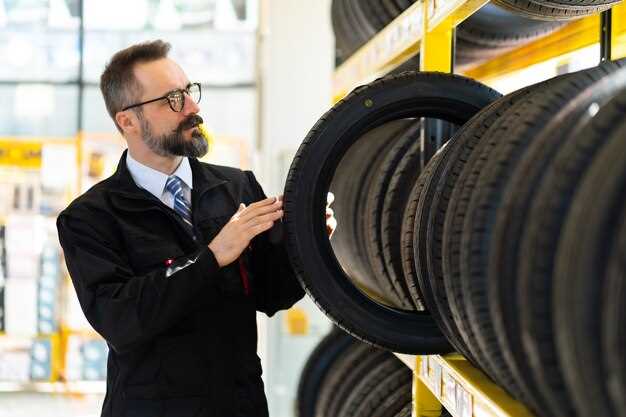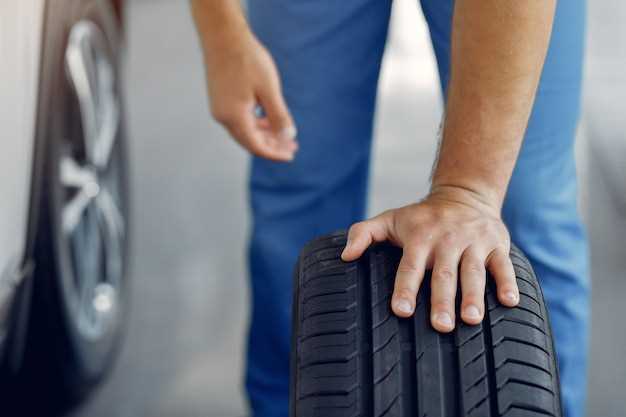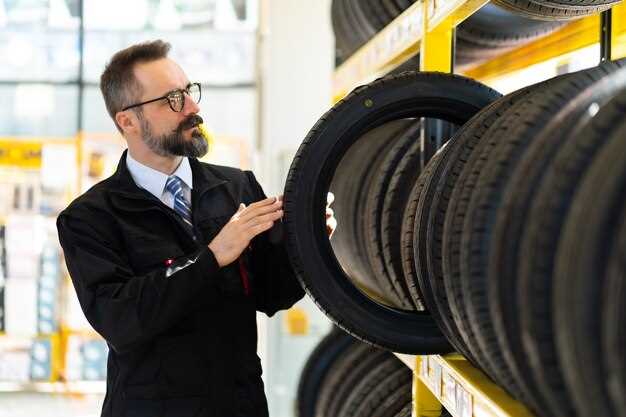
When considering the purchase of a used vehicle, many buyers often overlook a crucial factor: the condition of the tires. Tire inspection can provide significant insights into the overall health and safety of the car. A comprehensive review of the tires not only affects vehicle performance but also influences long-term maintenance costs.
Worn or damaged tires can lead to dangerous driving situations, reduced fuel efficiency, and increased repair expenses. Buyers need to recognize that tires are the vehicle’s only contact with the road and significantly impact handling and braking. Therefore, a thorough inspection of tire tread depth, alignment, and sidewall integrity should be a top priority during the car-buying process.
Understanding tire condition is not just about safety; it also means being informed about potential immediate expenses. If a set of tires needs replacing soon after purchase, it could add a hidden cost that the buyer may not have anticipated. Thus, making tire condition a focal point during the inspection can aid in making a savvy and safe vehicle investment.
The Importance of Tire Condition in Car Purchasing
Tires play a crucial role in the overall safety and performance of a vehicle. When buying a car, assessing the condition of the tires is essential for several reasons:
- Safety: Worn or damaged tires can significantly impair a vehicle’s handling and braking capabilities. Inspecting the tread depth and checking for any visible signs of damage can help ensure safe driving conditions.
- Cost Implications: New tires can be a considerable expense. If a car has tires that need immediate replacement, this could increase the overall cost of the purchase. Understanding the remaining life of the tires is important for budget planning.
- Performance: The condition of the tires affects traction, stability, and fuel efficiency. Poor-quality tires can lead to decreased performance and increased fuel consumption, impacting the ownership experience.
- Tread Wear Indicators: Many tires have built-in tread wear indicators that can signal when it’s time to replace them. Buyers should check for these indicators before making a decision.
To effectively evaluate tire condition, buyers should:
- Examine the tread depth using a tread depth gauge or the penny test.
- Look for any cracks, bulges, or cuts on the tire surface.
- Check for uneven wear patterns, which may indicate alignment or suspension issues.
- Review the age of the tires; most manufacturers recommend replacing tires every six years.
In conclusion, tire condition is a critical factor when purchasing a vehicle. By thoroughly evaluating the tires, buyers can make informed decisions that ensure their safety and financial well-being in the long run.
Evaluating Tire Wear Patterns for Better Purchase Decisions

When considering a vehicle purchase, one of the crucial aspects to evaluate is the condition of the tires. Tire wear patterns can reveal significant information about the overall maintenance and performance of the car, which can directly impact your buying decision.
During an inspection, examine the tires for uneven wear patterns. These may indicate potential issues such as misalignment, improper inflation, or suspension problems. For instance, if the inner or outer edges of the tire are worn down more than the center, this may suggest that the vehicle has been driven with incorrect tire pressure.
Furthermore, check for signs of cupping or scalloping, characterized by a wavy or uneven surface. This condition often results from imbalances or worn-out suspension components, suggesting that the vehicle may require expensive repairs in the near future.
Additionally, look for any cracks, bulges, or other forms of damage on the tire sidewalls. Such imperfections can compromise safety and indicate that the tires are nearing the end of their usable life.
Assessing the tread depth is equally important. A tire with less than 2/32 inches of tread may perform poorly, especially in wet conditions, jeopardizing your safety. Use the penny test or a tread depth gauge during your inspection to verify the tread integrity.
In conclusion, understanding tire wear patterns is essential for making informed decisions when purchasing a vehicle. By carefully inspecting the tires, potential buyers can avoid costly repairs and ensure they invest in a reliable car.
Understanding the Impact of Tire Quality on Vehicle Safety
Tire quality significantly influences overall vehicle safety, as tires are the only point of contact between the vehicle and the road. High-quality tires are engineered to provide optimal grip, stability, and control, which are essential for safe driving under various conditions. Poor tire quality, on the other hand, can lead to increased stopping distances, reduced traction, and a higher likelihood of tire blowouts.
Worn or substandard tires can compromise vehicle handling, making it difficult for drivers to maintain control during sharp turns or emergency maneuvers. Tires with inadequate tread depth may struggle to channel water away during wet conditions, increasing the risk of hydroplaning. This highlights the importance of not only selecting the right tires but also regularly inspecting their condition to ensure safety on the road.
Moreover, the materials used in tire manufacturing greatly contribute to performance and durability. Tires made from high-quality rubber compounds are more resistant to wear and provide better grip, reducing the likelihood of accidents. It is crucial for buyers to prioritize tires that meet safety standards and feature advanced technologies designed to enhance performance.
In summary, understanding the impact of tire quality is essential for vehicle safety. Buyers should assess tire conditions carefully as part of the car purchasing process, ensuring that they select vehicles with high-quality tires to safeguard their driving experiences.
Key Tire Inspection Tips Every Buyer Should Know

When purchasing a car, assessing the tires is paramount to ensure safety and performance. Start by examining the tread depth. Use the penny test: insert a penny into the tread with Lincoln’s head facing down. If you can see the entire head, the tires may be worn out and need replacement.
Next, check for any visible damage. Look for cracks, bulges, or punctures on the sidewalls and tread. These issues can compromise the tire’s integrity and lead to potential blowouts while driving.
Inspect for even wear across the tires. Uneven wear patterns may indicate alignment issues, improper inflation, or suspension problems that could affect vehicle handling. If the wear is uneven, it might be advisable to have the car checked by a professional.
Pay attention to the age of the tires as well. Even if the tread looks good, tires typically have a lifespan of six to ten years. Check the sidewall for the DOT code, which reveals the manufacturing date. If the tires are older than this, consider negotiating for replacements.
Lastly, assess the tire pressure. Under-inflated or over-inflated tires can impact fuel efficiency and vehicle stability. Ensure that the seller provides you with the manufacturer’s recommended tire pressures to confirm compliance.



